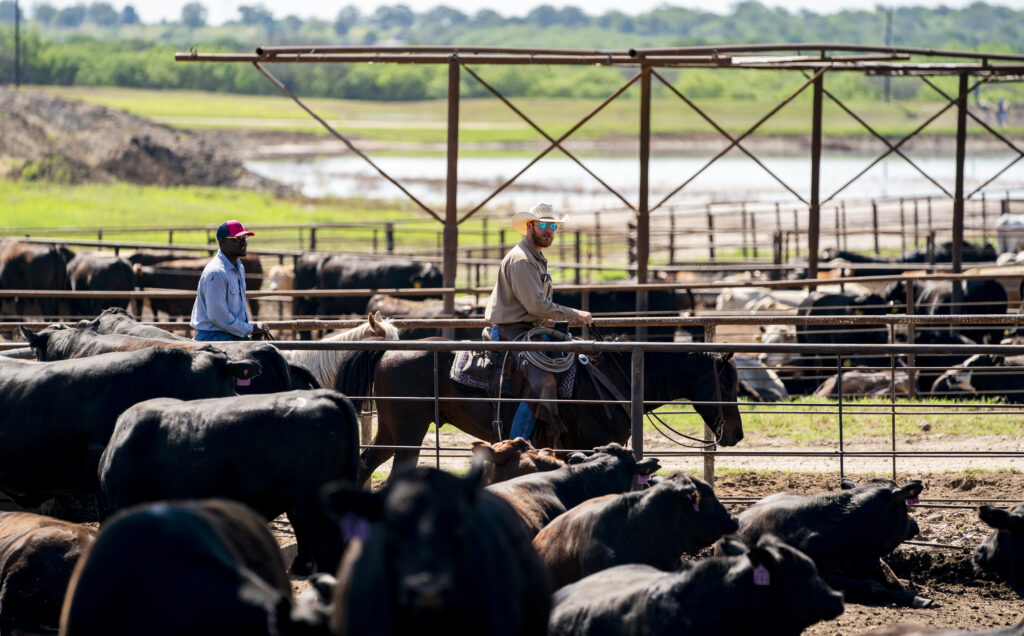In the event of a major emergency or disaster, personal safety should always come first. However, farmers and ranchers in Texas should also have an emergency preparedness and response plan that protects the safety of livestock and other animals on the farm or ranch.
Emergency preparedness is important for all animals, but especially for livestock because of their size, feed requirement, and shelter and transportation needs.
The most likely emergency scenario in Texas is flooding.
Floods
Floods can be “flash” floods that occur very quickly due to intense rainfall, or develop over time from tropical depressions, tropical storms and hurricanes. Flooding can also result from a failed dam upstream of a farm or ranch. Farmers and ranchers should assess the risk of flooding in their particular region and plan accordingly.
Preparing for a Flood
Identify Emergency Resources: In case of a flood situation, have in place an emergency plan to protect your livestock. The emergency plan should include phone numbers of resources you may need before, during and after the emergency, including:
- Employees
- Neighbors
- Veterinarians
- Poison Control Center
- Animal shelters

- County Cooperative Extension
- Livestock transport resources
- Feedstock providers in various regions
Make sure to include contact information for resources out of the area as well in case local resources are overwhelmed.
Ensure Animal Identification: All livestock should have visible identification numbers, even if you do not plan to transport them from the property. Floods often drive livestock to seek shelter. They often become lost or end up in a neighbor’s pasture.
Restrict Access to Dangerous Areas: When necessary, move livestock to higher ground and deny access to floodprone pastures, barns and other structures. Many livestock drown because they refuse to leave flooded shelters. Make sure that livestock are not able to reenter potentially dangerous areas.
Supply Food and Water: During floods, it’s important that livestock have plenty of food and clean water. The emergency preparedness plan should include contingency options for feeding and watering these animals if existing resources become contaminated by floodwaters. In some cases, it may be necessary to truck in water to livestock holding areas.
Remove Potential Contaminants: Floodwaters often contaminate soils, animal feed supplies, and fresh water sources by carrying chemicals, fertilizers, trash and other debris from their original containers and locations. Where this hazard exists:
- Label hazardous materials and place them in a safe location.
- Remove chemicals, fuels, fertilizers, and other contaminants to higher ground and check containers for leaks.
- Maintain an inventory of all hazardous substances that could be leaked during a flood.
- Remove old buried trash that could leach into crops, feed supplies, water sources and pastures.
- Secure or remove anything that could become blowing debris, including trailers, propane tanks, boats, feed troughs.
Check for Fire Hazards: During floods, farmers and ranchers also need to protect livestock from the threat of fires. Plan to remove all fuels away from the vicinity of barns. Turn off all electrical power to barns and buildings, and other structures that house livestock until the threat of flooding has subsided. Instead, use gasoline or diesel generators that can be transported away from the area when not in use.
Flood Recovery
A key component of any emergency plan should include what steps to take after an emergency to protect you, family members, coworkers, and animals. This is especially true when it comes to livestock. The aftermath of a flood can leave serious hazards that can lead to injury and death.
Common hazards include:
- Contaminated food and water supplies
- Standing, stagnant water
- Mosquitoes
- Livestock carcasses
- Sharp objects transported or blown into pastures
- Sick/diseased animals
- Wild animals displaced by floodwaters
- Damaged barbed wire fences and gates
- Weakened barns and other structures
- Eroded and unstable creek beds

Inventory Livestock: Immediately after a flood event, inventory all livestock and identify any missing animals. Inform neighbors of animals that are lost. Unfortunately, in the chaos after an emergency event, thieves take this opportunity to gather lost animals and sell them as soon as possible. Inform local livestock auction barns in your area to be on the lookout for lost animals that carry your brand or identification.
Remove Hazardous Objects: If it can cut, scrape, gouge or poke, livestock will find it. After a flood, seek out and remove dangerous objects from pastures. Check fences for damage and repair them immediately. Removing these objects not only protects livestock, but protects farm workers and machinery from being injured or damaged when mowing pastures that have grown over and hidden these objects.
Observe Livestock for Sickness: Following a flood, there can be a danger of infectious diseases in livestock. It’s important to remove any dead animals as soon as possible and bury them at least three to four feet deep covered with lime. This protects the spread of any diseased animal by wildlife.
- Inspect livestock for wounds and treat them immediately.
- Watch for signs of diseases such as pneumonia, foot rot or leptospirosis.
- Isolate sick animals from the herd and report any sign of disease to your veterinarian.
- Make sure all livestock vaccinations are current.
- Spray insect repellents to protect livestock from increased mosquito and fly populations.
Inspect Food and Water Sources: Check livestock feeds for water damage and contamination. Feeding livestock damaged grains and moldy hay can cause digestive problems in livestock. Do not force livestock to eat feeds or drink water that has been flooded, or that has possibly been contaminated by pesticides or other chemicals.
For farmers and ranchers, protecting livestock from the hazards of natural disasters is essential. The suggestions included in this fact sheet are also applicable to other disaster scenarios common in Texas, including tornadoes.
